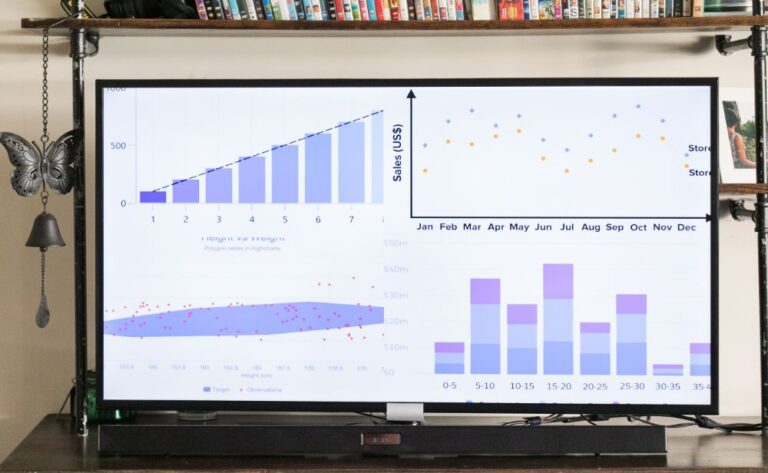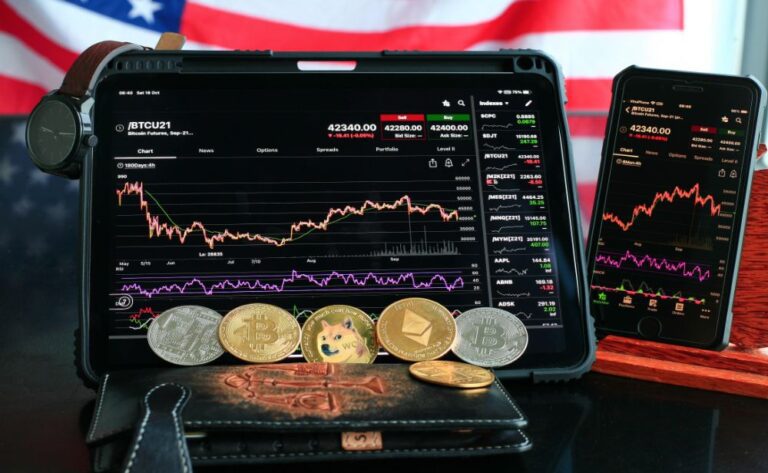FAST FACTS
- Account Minimum: $0
- Fees: Spread cost; Commissions; Overnight financing costs; Inactivity fees
- Best for: Low Costs
To comply with new Polish rules, X-Trade, founded in 2002 as Poland’s first leveraged foreign exchange trading company, changed its name to X-Trade Brokers in 2004. The company changed its name to XTB Online Trading (XTB) in 2009 and went public in 2016, listing under the ticker symbol XTB on the Warsaw Stock Exchange.
XTB is currently providing access to a range of markets, including FX, shares, indices, metals, commodities, and even cryptocurrencies, as it continues to make inroads in the highly competitive and ever-changing online brokerage industry. The company is governed by British law. in addition to being registered with the Financial Conduct Authority (FCA #522157) and the Polish Financial Supervision Authority (KNF). XTB, like many other forex brokers, does not accept U.S. clients.
xStation 5 is XTB’s premier web-based platform. This, along with the ubiquitous MT4 (downloadable) platform and a complete mobile application, is XTB’s full online offering to consumers. While XTB’s ancillary costs were comparable to industry norms, the company’s continually smaller spreads were impossible to ignore because they clearly distinguished it from the competition. This was taken into account by Investopedia’s rating algorithm when determining XTB’s appeal to cost-conscious traders.
KEY TAKEAWAYS
• Rated our most cost-effective forex broker.
• XTB gives access to a number of markets, including foreign exchange, stocks, indexes, metals, and commodities; it even offers cryptocurrency trading.
• XTB’s maximum leverage for non-U.K. traders is 500:1. In contrast to U.S. accounts, the U.K. accounts can leverage up to a 30:1 ratio.
Who Can Use XTB Online Trading (XTB)?
XTB is a good option for traders who wish to minimize their costs, whether it’s the intrinsic cost of placing a transaction (bid/ask spread) or not having to pay wire fees. For non-U.K. traders, XTB provides maximum leverage of up to 500:1. whereas U.S. companies are responsible for their own accounts, the U.K. accounts can leverage up to a 30:1 ratio. The company prioritizes customer service and provides appropriate teaching resources and research facilities for novice traders. This organization is regarded as Investopedia’s Best Forex Broker for Low Costs.
Pros
• Minimum forex spreads
• Governed by FCA (U.K.)
• Provides security for client accounts
• Prioritization of customer service
Cons
• Does not accept U.S. clients
• Non-FX spread costs are substantial
• There is no assured stop loss
• No capabilities for backtesting or automated trading
The Pros Described
• XTB advertises minimal FX spreads of 0.5 for “Standard” accounts with no commission and 0.1 with commission for “Pro” accounts. This is the best retail FX brokerage by a wide margin.
• XTB Online Trading (XTB) is governed by the Financial Conduct Authority (FCA #522157), one of the primary U.K. regulatory authorities. And is well renowned internationally for its stringent enforcement of fair market standards for both persons and enterprises. A firm’s legitimacy is significantly enhanced by the fact that it is governed by a respectable government-backed organization. Traders understand the inherent risk of markets, but they want the piece of mind that their funds are not exposed to risks other than those they are taking, such as counter-party risk.
• XTB provides “negative balance protection,” a feature that has grown increasingly significant among online brokers. The 15 January 2015 SNB event was most likely the impetus that shook the markets, notably the heavily leveraged retail FX market.
• XTB prioritizes customer care, which includes 24-hour-a-day telephone support, a dedicated account manager, and a live chat feature. The ability to easily contact a broker is essential for everyone involved in online trading.
Cons Explanation
• Due to regulatory restrictions, XTB does not accept U.S. clients, preventing it from being deemed a global broker. This would be a red warning if the company were not controlled by the FCA, which, along with U.S. regulatory authorities (NFA, CFTC), is usually regarded as the foremost regulatory agency.
• XTB charges commissions for cryptocurrency (Pro) and stock CFD (Standard and Pro) trades, which are less profitable for the client.
• XTB is one of the few prominent forex brokers that does not provide guaranteed stop-loss orders (GSLO). GSLOs safeguard the trader from market gap risk, and many brokers are ready to provide this service (for an additional fee) and assume the risk themselves.
• XTB’s xStation 5 lacks back-testing and automated trading capabilities, leaving algorithmic traders with just MT4 as an option.
Costs
The entire charge and cost structure of XTB is competitive in the online forex brokerage industry. The advertised minimum FX spreads for the various account formats distinguish XTB. The minimum spread for the “Standard” account at XTB is 0.5, whereas the “Pro” account has a minimum spread of 0.1. However, a charge of $3.50 per lot is added to Pro account trades. In retail FX jargon, one standard lot is equal to 100,000 units of the base currency, thus this would equate to a minimum spread of 0.45, which is still among the finest in the industry.
The 0.43 is the average spread before commission was imposed, therefore the true average EUR/USD spread for Pro accounts would have been 0.78, which is among the best, if not the best, in the online foreign exchange brokerage market. XTB charges commissions for trades involving cryptocurrencies (Pro) and stock CFDs (Standard and Pro) as well.
There are further fees for client withdrawals of less than a specified amount, a percentage charge for withdrawal to a credit card, and percentage charges for using e-commerce sites (Skrill, Neteller, SafetyPay). However, there are no fees associated with incoming or outgoing wire transactions or with canceling an account.
Customers who seek to open a live account with XTB are not required to make a minimum deposit, however this amount will be subject to the margin requirements of the smallest trade size they wish to execute. International customers with large account balances are eligible for cashback rebates and welcome incentives, however U.K. customers with significant trading volumes are not. Customers are offered reduced margins.
Trade Experience
xStation 5, XTB’s proprietary trading program, is a simplified, stable, and browser-friendly trading platform (Chrome, Firefox, Safari, or Internet Explorer). The user interface is quite standard and straightforward, which boosts its appeal. It is not the most feature-rich platform, but its usability makes it appear more functional than it is.
This is the company’s flagship product, and it features a redesigned look and feel, one-click trading, and full connectivity across desktop and mobile platforms, all of which should be beneficial to traders. Trading, creating watchlists, and changing charts appear to be simple and intuitive. Additionally, FAQs and educational materials can be accessed from within the trading application. Traders are notified directly through the platform or mobile application.
However, there were disadvantages. There was no option to generate customized indicators. XTB offers the regular MetaTrader4 platform, which includes these and other features for traders already familiar with the third-party software.
Three basic order types are available in xStation 5, with the possibility to connect “take profit” and/or “stop loss” orders. In addition, the trader has the option to convert the standard stop loss to a trailing stop loss before to or after trade execution.
• Market – The simplest order in which a trader requests that their trade be completed at the current market rate.
• Limit – A pending order in which the entry price is either below or above the current market price, depending on whether the order is to buy or sell. The trader also has the option of choosing the order’s expiration time.
• Stop – A pending order in which the entry price is at a predefined level above or below the current market price, depending on whether the order is to buy or sell. The trader also has the option of choosing the order’s expiration time.
Platform.
The mobile version of xStation 5 includes most of the functionality available in the desktop application, except the ability to set price alerts, which seemed like a peculiar oversight. Traders can access XTB’s trading instruments, complex order types, account details, and charting from the Android or iPhone apps. A streaming news feed is also available on the mobile application.
XTB does not offer social (or “copy”) trading, money manager accounts, or a free VPS service. However, there were a few unique offerings that may be worth a second look by some traders. The inclusion of “market sentiment,” “top movers,” “stock scanner,” and “heat map” tools is impressive.
Scanner and News.
XTB does not offer ready-made products for back-testing, though clients can create their own back-testing applications as XTB offers an open API both for MT4 and xStation. XTB uses smart-order routing for equities and equity CFDs. However, XTB does not act as a direct member of any exchange as it executes all trades via a third-party broker.
Range of Offerings
XTB provides access to a broad selection of financial instruments across a wide range of different asset classes. The product catalog includes:
- 48 currency pairs
- Over 20 global indexes
- Major commodities
- More than 1,500 global stock CFDs
- 60 ETF and cryptocurrency CFDs
Where the range of offerings does fall short is the lack of spread betting instruments. XTB offers maximum leverage of up to 500:1 for non-U.K. accounts while U.K. accounts get up to 30:1 leverage.
Customer Service
In this day and age, an online broker that does not place a high priority on addressing the needs of its customer in an efficient and satisfactory manner may be doomed to failure. XTB is well aware of this. Contact options cover all the bases, with email for clients and prospective clients, 24/5 local phone support, and a live chat facility. Additionally, clients are assigned an account manager to assist them with relevant account-related matters.
Phone support is responsive but the chat experience is a bit more erratic. It isn’t uncommon, for example, for live chat requests to be redirected to an email form instead. In the end, though, functional support is rendered. A phone number is easily available on xStation 5 and chat support can be launched from the trading platform, which is very convenient. Online customer support is available in several languages, which enhances XTB’s appeal to a broader client base. The broker also runs satellite offices to support licensed operations in several regions.
Education
XTB’s educational offerings are on par with the industry standard. That said, it is apparent that the firm has identified this as a priority. The “courses” are divided into four categories—basic, intermediate, expert, and premium—though users can only access the first two through the website. “Premium” courses can be accessed free of charge on the xStation 5 platform, but one will have to sign up for an account (demo / live). The “expert” category has yet to be populated.
Each course includes both basic-level videos and articles. The material does not deviate from the industry norm of providing basic education on forex and CFD markets. Topics included: fundamental and technical analysis, risk management, and macroeconomics. New investors will find some helpful background information, but relying solely on XTB’s education to become proficient in the markets is unlikely. That said, the material covers all the major topics that a beginner should need to know.
Market Sentiment and Education.
Outside experts are also used for a few advanced topics and strategy updates, mainly in the free “premium” supplemental education section. Most of the content is well organized in a familiar lesson structure with videos and quizzes. XTB’s academy course design is ambitious in that it intends to cover material for people at different stages of the trading spectrum, but as of this review that is still a work in progress.
Portfolio Analysis
Placing a trade on xStation 5 is simple and intuitive. The order ticket is limited to initiating basic market and pending orders with provisions for “stop loss” and “take profit” orders. The trader also has the option of making the stop loss a trailing stop loss, should they so desire. XTB does not provide a trading journal nor do they provide tax accounting tools on the platform.
The client chooses the trade size and the order ticket populates with pertinent information, such as the contract value (in either EUR or GBP), margin required (GBP), spread cost, commission (if any), pip value, and swap costs.
Unlike some competitors’ platforms, xStation 5 does not have a built-in tool for analyzing trading activity. This omission dropped them into the lower-ranking tier for this category, as the ability to drill down into one’s trading activity beyond the basic metrics can be invaluable to all traders.
Investigate Amenities
The research facilities of XTB exceed industry standards. In addition to a simple and filterable regular economic calendar, XTB provides a news feed that can be sorted by “instrument,” “trading signal,” “economic reports” (fundamental), and “technical analysis.”
In addition, there is a market analysis tab containing filterable sections like “market sentiment,” “top movers,” “stock scanner,” and “heat map.” This is by far the most striking feature among the analytical tools provided by XTB. Each component is nicely organized and contains actionable, or at least interesting, information that can be beneficial to traders.
Security
• XTB U.K. carries a license issued by the Financial Conduct Authority with the number 522157.
• As of 2018, CySEC regulates XTB Europe under license number 169/12.
• The Belize International Financial Services Commission regulates XTB International with license number IFSC/60/413/TS/19.
• X-Trade Brokers DM SA is licensed by the Polish Securities and Exchange Commission with license number DDM-M-4021-57-1/2005 and regulated by the Polish Financial Supervision Authority (Komisja Nadzoru Finansowego).
• XTB Spain is regulated by the Comisión Nacional del Mercado de Valores under license number 40.
• At the time of this assessment, XTB South Africa is pending license approval.
Negative balance protection is provided by XTB, as stipulated by ESMA laws that went into force in 2018, however there are no guaranteed stop loss orders (GSLO). XTB lacks two-factor authentication (2FA) but offers biometric authentication for its mobile application and requires passwords to contain upper/lower case letters, digits, and special characters. While XTB does not offer two-factor authentication for its mobile platform solutions, it does offer two-factor authentication for essential client office procedures such as personal or financial data modifications.
Verdict
XTB Online Trading (XTB) provides many of the tools required for online trading success to prospective clients. Offering clients the lowest forex spread costs in the business is what it does better than anybody else. Other product offers include expenses (spread plus commissions) that are more in line with the industry standard. xStation 5, despite its limitations, is intuitive and functional, and certain innovations, such as the instrument scanner and heat map, increase its attractiveness to traders of all types.
Negative balance protection provides clients with peace of mind while FCA regulation lends credibility. The education catalog is adequate, but customer service is somewhat above average. For the more technologically advanced trader, MT4 offers “expert advisors,” back-testing, and auto-trading. Overall, XTB Online Trading (XTB) is optimal for budget-conscious consumers who seek to trade retail foreign currency markets.
Methodology
Investopedia is committed to provide investors with objective, in-depth ratings and reviews of online brokers. Our reviews are based on a six-month evaluation of all areas of an online broker’s platform, including the user experience, the quality of trade executions, the products available on their platforms, pricing and fees, security, the mobile experience, and customer support. We built a rating scale based on our criteria and incorporated over 3,000 data points into our star-ranking system.
In addition, each broker we surveyed was required to complete a 320-point questionnaire regarding all areas of their platform that we evaluated. Many of the online brokers we investigated gave us in-office demonstrations of their platforms.
Our team of industry experts, lead by Theresa W. Carey, conducted our research and created this best-in-industry methodology for grading online investment platforms for all levels of investors.







One Comment